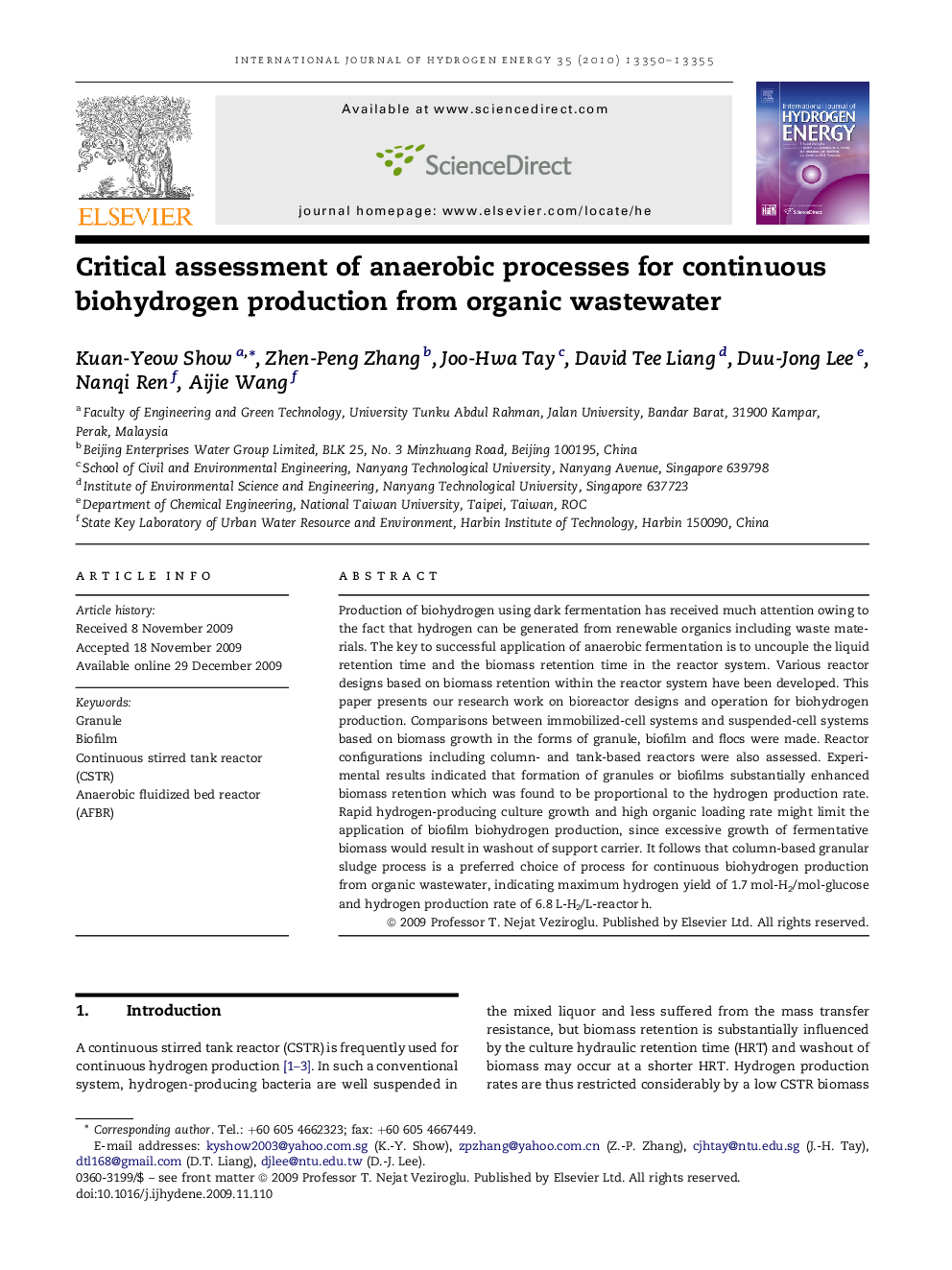| Article ID | Journal | Published Year | Pages | File Type |
|---|---|---|---|---|
| 1282698 | International Journal of Hydrogen Energy | 2010 | 6 Pages |
Production of biohydrogen using dark fermentation has received much attention owing to the fact that hydrogen can be generated from renewable organics including waste materials. The key to successful application of anaerobic fermentation is to uncouple the liquid retention time and the biomass retention time in the reactor system. Various reactor designs based on biomass retention within the reactor system have been developed. This paper presents our research work on bioreactor designs and operation for biohydrogen production. Comparisons between immobilized-cell systems and suspended-cell systems based on biomass growth in the forms of granule, biofilm and flocs were made. Reactor configurations including column- and tank-based reactors were also assessed. Experimental results indicated that formation of granules or biofilms substantially enhanced biomass retention which was found to be proportional to the hydrogen production rate. Rapid hydrogen-producing culture growth and high organic loading rate might limit the application of biofilm biohydrogen production, since excessive growth of fermentative biomass would result in washout of support carrier. It follows that column-based granular sludge process is a preferred choice of process for continuous biohydrogen production from organic wastewater, indicating maximum hydrogen yield of 1.7 mol-H2/mol-glucose and hydrogen production rate of 6.8 L-H2/L-reactor h.
